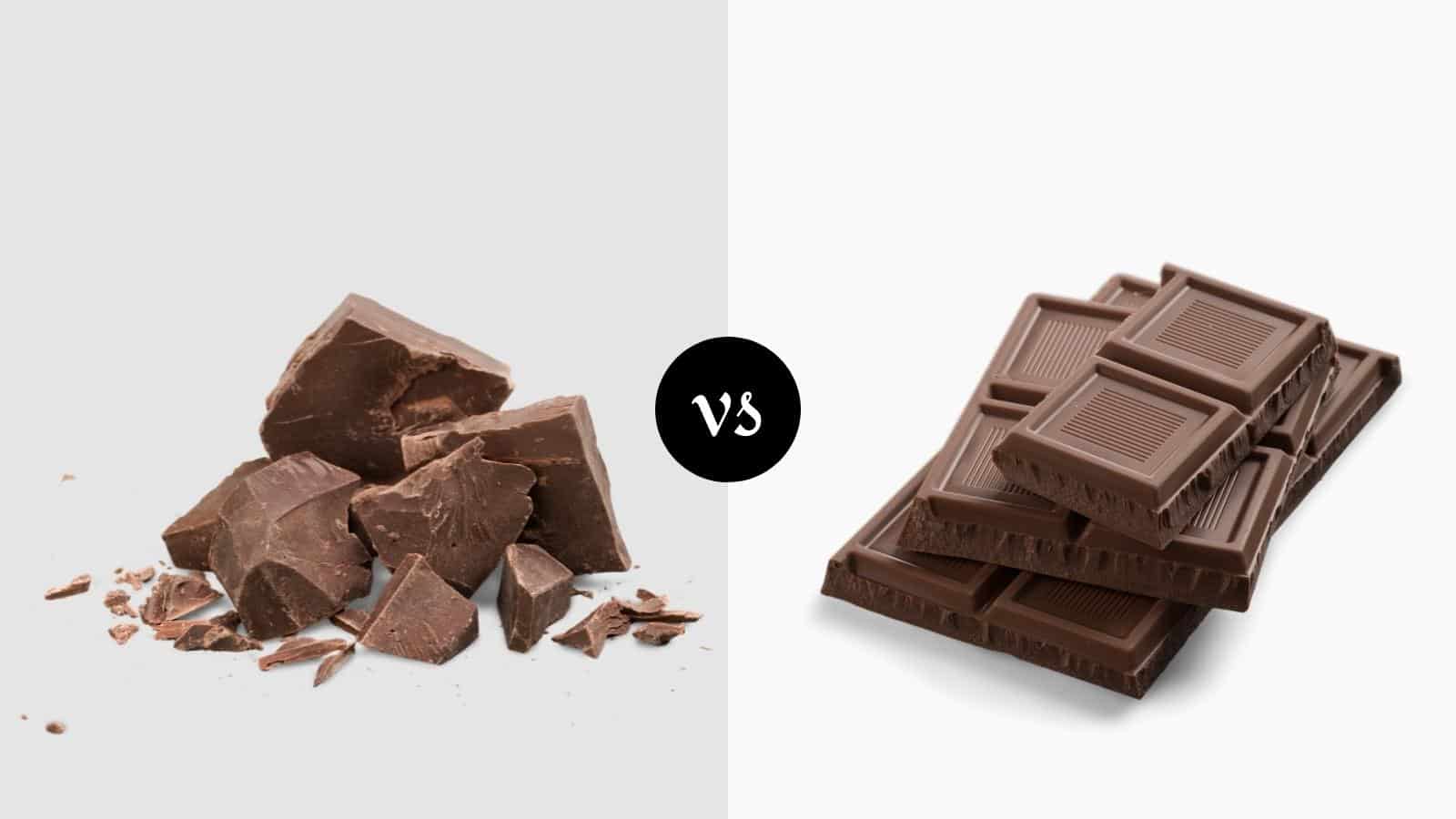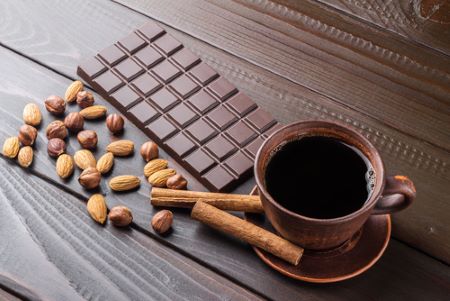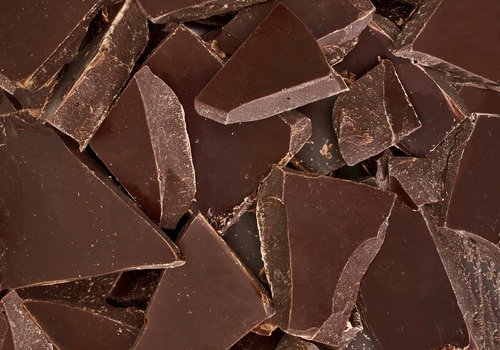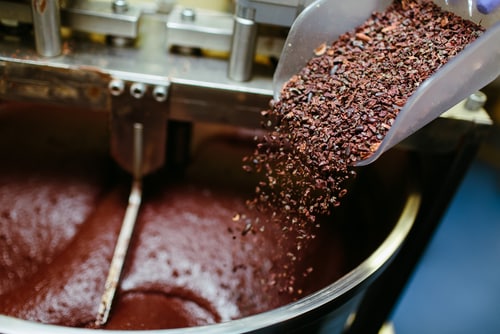
Chocolate is something that none can say no to. It is probably one of the best things that man ever came to know about. Chocolate is not only delicious to eat, many incarcerations are extremely beneficial to human health.
There are different kinds of chocolates, and all of them have their own benefits. They may vary in color, taste, and even smell, but what remains common is that chocolate is always delicious.
In this article, we will be explaining the differences between bittersweet vs. dark chocolate.
Bittersweet vs Dark Chocolate Comparision
| Bittersweet Chocolate | Dark Chocolate | |
|---|---|---|
| Definition | 70% Cocoa | 90% Cocoa |
| Names | Bittersweet Chocolate, Dark Chocolate | Dark Chocolate, Bitter Chocolate, Unsweetened Chocolate, Pure Chocolate |
| Bitterness | Medium Bitterness (Variable) | Intense, Bold Bitterness |
| Best Uses | Snacking | Baking, Snacking If Intense Bitterness Preferred |
Bittersweet vs Dark Chocolate
Here’s a breakdown of the defining differences and main characteristics of both bittersweet and dark chocolate.
Bittersweet Chocolate
Bittersweet chocolate arises as the favorite for those who enjoy chocolate without either overpowering sweetness or excessively bitter flavor.
It’s versatile enough to bake with and comes in varying intensities. Let’s take a closer look at the main characteristics of bittersweet chocolate.
Definition
As all chocolate is classified by its concentration of cacao solids, bittersweet chocolate carries more cacao than semisweet chocolate and less than dark chocolate. Bittersweet chocolate has 70% cacao solids and above.
Names
Despite bittersweet chocolate actually being its own classification, some manufacturers brand their bittersweet chocolate as “dark chocolate,” particularly when produced or sold in the United Kingdom.
It is also at times referred to as semisweet chocolate.
Bitterness
The bitterness of the chocolate depends entirely on the quantity of cacao present in the chocolate. The Bittersweet chocolate is named dark chocolate.
Best uses
Those who find regular semisweet chocolate typically love bittersweet chocolate for snacking. It’s also ideal in all types of cookies, cakes, and desserts and in icing, frosting, truffles, fondue, puddings, and brownies.

How Is Bittersweet Chocolate Made?
Just like dark chocolate, bittersweet chocolate is made by grinding and heating cocoa beans until they form a liquid. The unsweetened chocolate then has a variable quantity of sugar added.
According to the Food and Drugs Administration (FDA), bittersweet chocolate must contain a minimum of 35% cacao liquor (a mixture of butter and cacao powder), reaching up to 84% on average at its ceiling (or higher) according to the demand.
Bittersweet chocolate is typically made in a double boiler using the indirect heat of boiling water as the heating element.

Benefits Of Bittersweet Chocolate
There are various benefits of bittersweet chocolate. The best thing about this chocolate is that it is highly antioxidant, extremely nutritious, it may also reduce heart-related issues, and lastly, it helps improve brain function.
Dark Chocolate
Dark chocolate is delectably bitter with minimal sugar added and is typically the preferred choice for bakers.
We’ll be breaking down everything you need to know about the world’s oldest and purest form of chocolate.

Definitions
Dark chocolate can range between 70% and 100% cacao although it is typically above 90% to be considered true dark chocolate.
The lower the cacao concentration, the more fats, and sugar or sweeteners are typically added. By definition, dark chocolate has no milk added to fortify the fat.
Origin
Dark chocolate has been with many since the very beginnings of society. The earliest records of dark chocolate trace back to The Olmec, which was Mexico’s first major civilization.
This places the first creation and consumption of dark chocolate at 1600 BCE. The Olmec would enjoy dark chocolate as a hot fermented beverage mixed with wine or local spices which were consumed out of specialized round jars called tecomates.
Names
Chocolate that has not been sweetened is referred to as dark chocolate. You may also find dark chocolate referred to as unsweetened, bitter, or pure chocolate.
Baking chocolate is a variety of dark chocolate which is unsweetened.
Bitterness
All dark chocolate is bitter and far bitterer than any sweetened variety. The concentration of cacao determines the intensity of bitterness.
Best Uses
There’s no healthier form of chocolate to snack on than dark chocolate. It’s also the best base flavor for anyone who wants complete control over the taste of whatever they’re making.
The high concentration of cacao ensures that the taste of chocolate stays bold and strong despite being combined with other strong flavors. It’s the go-to choice for artisanal or professional baking.
How Is Dark Chocolate Made?

Cocoa beans are manually harvested from football-sized pods that grow on tropical evergreen cocoa trees like Theobroma Cacao.
The ripe harvested beans, roughly 50 or more per pod, are fermented in the sun over a period of five to eight days, during which time the green cocoa seeds turn brown.
Brown fermented cocoa beans are dried in the sun for roughly a week before moving on to processing.
Various manufacturers employ different techniques to make chocolate, but essentially the dried cocoa beans are refined into nibs by means of winnowing and roasting.
The cocoa nibs are ground and heated to the point where they melt and transform into cocoa liquor. A portion of the liquor is at times pressed to separate out the cocoa butter and cocoa powder.
Dark chocolate only contains cocoa powder, cocoa liquor, cocoa butter, lecithin (oils), vanilla, and sugar. Absolutely no milk or milk powder is added.
Benefits Of Dark Chocolate
You’ll be happy to know that dark chocolate is packed with health benefits. It’s extremely nutritious.
A single bar containing between 70 and 80 percent cocoa fulfills the DV quotient of iron by 67%., magnesium at 58%, copper at 89%, and grants a whopping 98% of the DV for magnesium.
The fats in dark chocolate benefit heart health due to their healthy concentration of oleic acid, which makes up most of their composition.
Regular consumption may lower the risk of heart attacks, and it regulates healthy blood circulation by relaxing ones’ blood vessels.
While minor, dark chocolate acts as a minor stimulant thanks to the presence of theobromine which is also found in coffee. There is even proven research into dark chocolate’s role in reducing the risk of diabetes and diabetic complications.
Conclusion
In this article, we have differentiated both dark and bittersweet chocolate. The article has covered their main ingredients, ways of making, and their benefits for an average human.
In this draft, you will get everything you need to know about dark chocolate and bittersweet chocolate. If you still have some questions about this topic, let us know in the comment section.